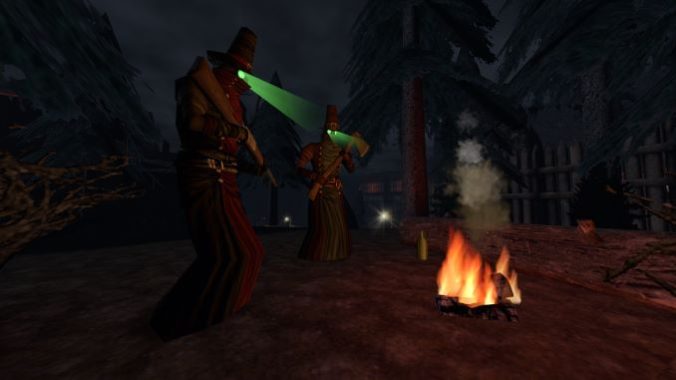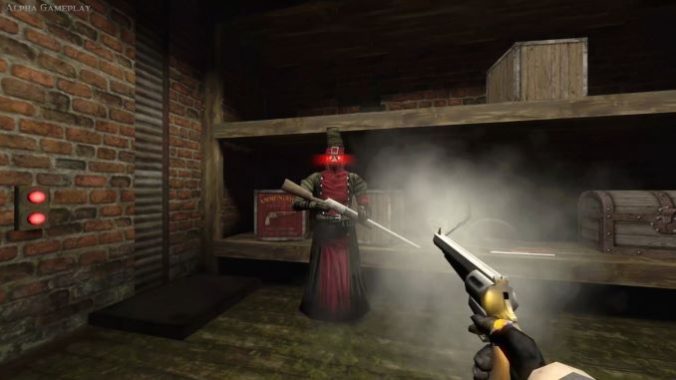Gloomwood Echoes the First-Person Stealth Horror Games of the Late ’90s

One of the broadest genres of popular indie games today is “they don’t make those anymore, let’s bring them back!” This can be refreshing. Massive big budget games can have a disdain or disinterest in the past, perpetually looking forward to the next version of Unreal rather than drawing on the medium’s rich history. Looking to the past can also be limiting, of course. Many classics are perpetually remade to limited and dwindling interest, while forgotten gems languish in obscurity. Fortunately, lo-fi PC revival Gloomwood (currently in early access on Steam) makes a strong first impression, and I don’t think it’s just because I find its base set of verbs tantalizing.
To summarize, Gloomwood is a first-person stealth horror game in the vein of Thief. It urges you to stay in the shadows, and a glinting ring on your finger indicates whether you are cloaked or exposed. However, that’s not exactly a binary state. In complete darkness you are nigh invisible, but even a little light can expose you if enemies are close. Noise is also a factor. Standing up lets you move quickly but makes you loud. Crouching makes you less visible and quieter, but slows you down. You can hit shift to walk even more slowly and prevent all but the smallest amounts of noise. Combat, especially with your handy sword cane, is tricky. It’s much better to lurk in the shadows and sneak behind enemies to fell them in one easy motion. There are guns, unlike Thief, but in true horror form, ammo is scarce and valuable.
This is all pretty classic stealth game shenanigans, but Gloomwood’s bareness is utterly beguiling. Though the game has plenty of particular nuances, there are no grand twists or pitches on the formula. There are, as of yet, no upgrades or special powers. Instead, there are the tense choices of a proper stealth game. The aforementioned gradients of sound and light have a tactility absent from the Assassin’s Creeds and Far Cries of the world. Gloomwood’s initial moments are as pure as gaming can get, absent of pretense. The game simply lends you a space and tools necessary to move through it.
The level design in particular showcases these strengths. Levels are open, with hidden crannies and multiple paths, but nevertheless frequently funnel you through chokepoints. It’s design that is interested in making you solve problems rather than merely granting freedom. Though it frequently allows a multitude of tools and approaches, Gloomwood is unafraid to put you in a tight corner. Stealth is always the most viable option, though it can be strategically broken. Ammo makes you powerful, but no amount of exploration will make outright assault completely viable. Exploring is thrilling and can come with marvelous dividends, but also puts you in danger. This makes Gloomwood’s world feel hostile and lived in. It’s not a world of holes for you to crawl through, with vents placed exactly for your convenience. Instead it’s a world that is constantly tightening its grip on you… but never tight enough that you can’t slip from its grasp.
